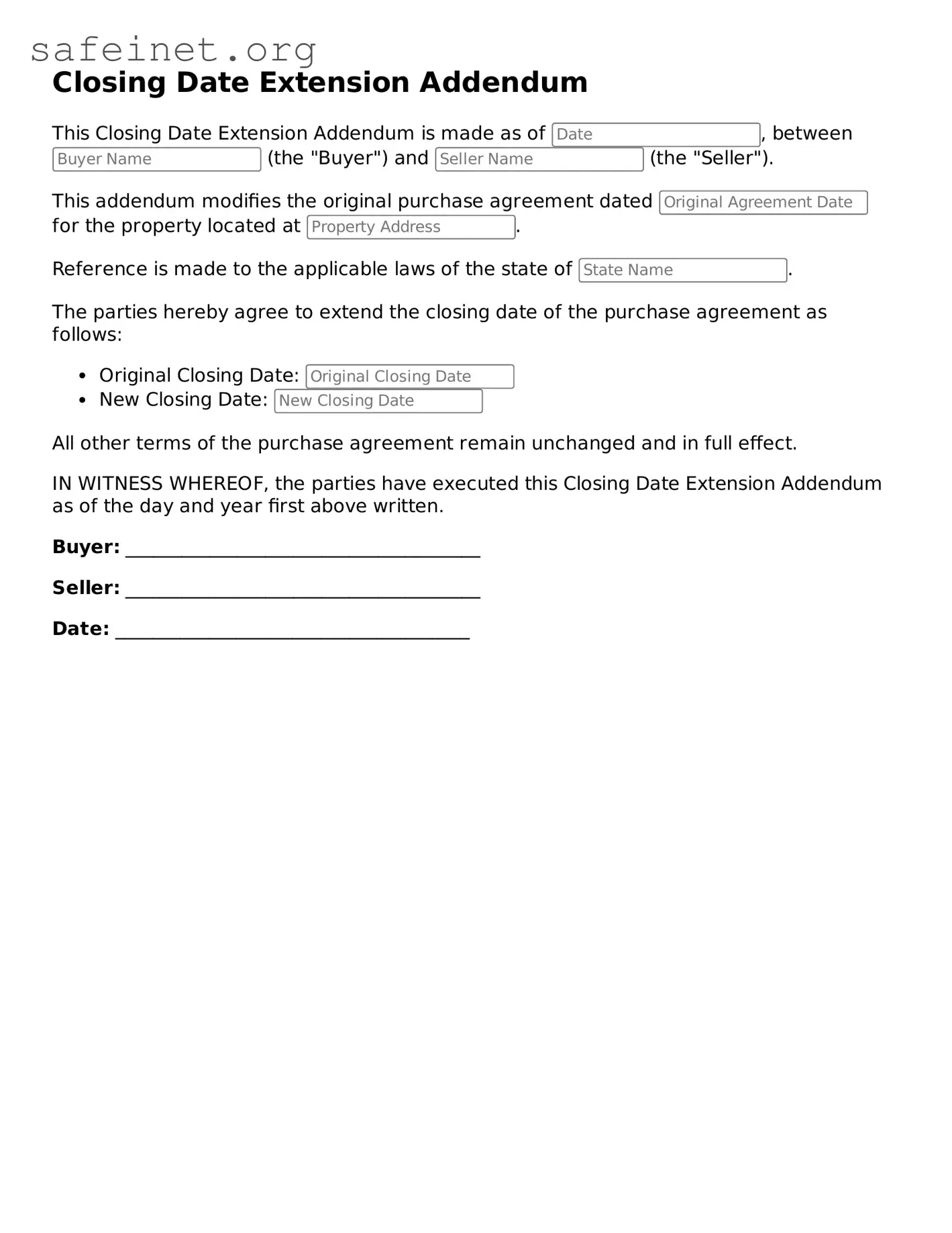What is a Closing Date Extension Addendum?
A Closing Date Extension Addendum is a document used in real estate transactions. It modifies the original purchase agreement to extend the timeline for closing. This can occur for various reasons, such as needing more time for inspections, financing, or other issues that may arise during the home-buying process.
When should I use a Closing Date Extension Addendum?
You should consider using this addendum if you find that you cannot meet the originally scheduled closing date. Common scenarios include unexpected delays in securing a mortgage, issues uncovered during an inspection, or waiting for the sale of another property to finalize.
How do I create a Closing Date Extension Addendum?
Creating the addendum typically involves drafting a document that clearly states both parties' agreement to extend the closing date. It should include the new closing date, the reasons for the delay, and any other pertinent information. It is often wise to consult a real estate professional or attorney to ensure everything is properly documented.
Is there a limit to how long I can extend the closing date?
There is no universal limit to how long you can extend the closing date; it depends on the agreement between the buyer and seller. However, both parties should consider practical timelines and market conditions when deciding on a new closing date.
Does the Closing Date Extension Addendum affect my purchase agreement?
Yes, the addendum modifies your original purchase agreement. It is important to understand that all the terms and conditions in the original agreement remain in force, except for those specifically changed by the addendum. Thus, both parties should review the document carefully.
What happens if one party does not agree to the extension?
If one party does not agree to the extension, the original closing date remains in effect. This situation can lead to complications, such as the potential for contract termination or legal disputes. Communication between both parties is crucial to reach a mutual understanding.
Can a Closing Date Extension Addendum be used in conjunction with other addenda?
Yes, this addendum can be used along with other forms, such as inspection addenda or financing addenda. Each document addresses different aspects of the transaction, so ensure that all are consistent and clearly understood by everyone involved.
Do I need to sign the Closing Date Extension Addendum?
Yes, both the buyer and the seller must sign the addendum for it to be valid. Signing confirms that both parties agree to the new closing date and any other terms outlined in the document. It is always wise to keep a copy of the signed addendum for your records.
What should I do if I need to change the closing date again?
If you need to change the closing date again, a new Closing Date Extension Addendum should be created. This process should follow the same guidelines as you did for the first extension, and both parties must again agree to and sign the new document.
Can I use this form if I am a seller?
Yes, sellers can use the Closing Date Extension Addendum as well. If a delay affects the seller's ability to finalize the sale, they can propose an extension just as buyers can. Clear communication is essential to ensure that both parties understand and agree to the changes.
